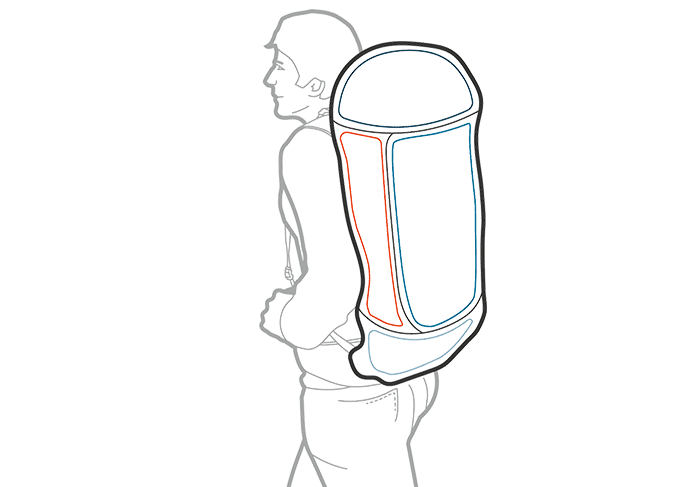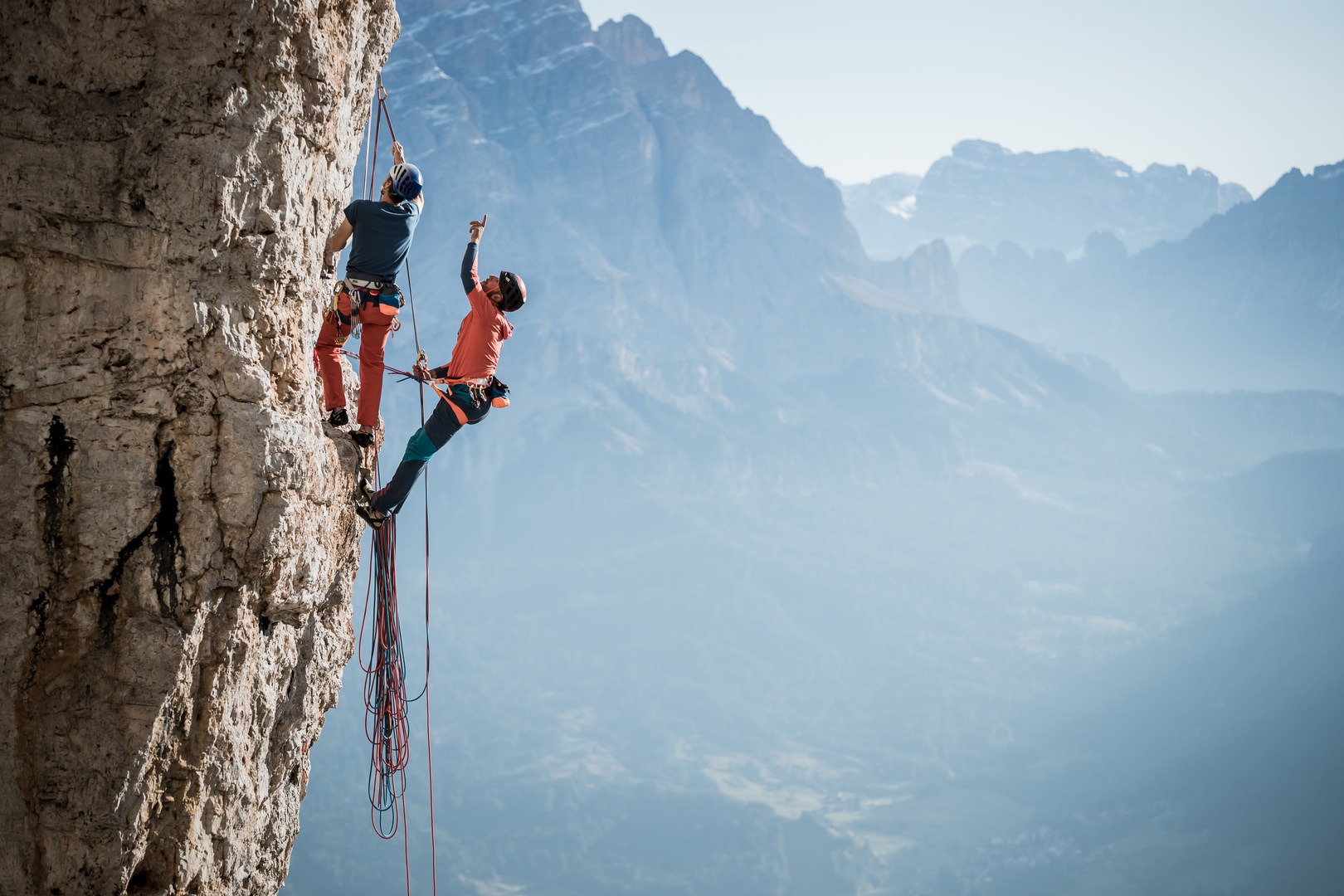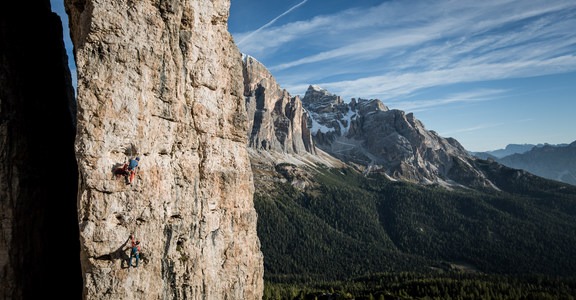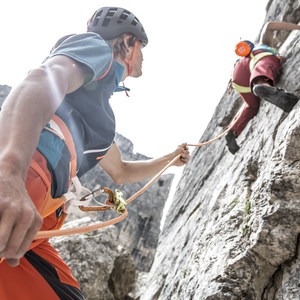Packing your backpack correctly
Alpine climbers need to pack light. Whether for the approach or on the rock face, to ensure maximum freedom of movement, only take the equipment that you really need. It is important to pay attention to every single gram when packing your backpack. You’ll also need to pack it smartly and ensure it fits optimally.
We divide climbing backpacks into four packing areas:

- Lid Compartment - Small items such as a cell phone, nuts or a climbing guidebook are ideally placed in the lid compartment where they can be reached quickly.
- Back - Heavy equipment such as quickdraws, camming devices and other climbing equipment should be as close to the body as possible without the metal parts being able to push into the back (position across the backpack). This optimally transfers the load to the pelvis via the hip belt. At the same time, the heavy equipment should not be too high up, otherwise the backpack will start to sway.
- Outside - Medium-weight items such as clothing can go towards the outside at the top. A harness and slings can be placed towards the outside at the bottom.
- Bottom - Lightweight equipment such as a bivi bag, first aid kit or hardshell should go at the bottom. A circumferential zipper is helpful to keep these items accessible. Finally, we can push the rope into the backpack from the top or secure it under the lid using the rope attachment (between area 1 and 2/3). A helmet can either be placed on the rope in the backpack or, if it has a rope attachment, attached under the rope as the last thing to go in the backpack.
Adjusting your pack
The better a backpack is adjusted to fit an individual climber, the easier it is to carry and provide sufficient freedom of movement on the rocks.
The following five steps describe how to optimally adjust your climbing backpack:
- Open all buckles and loosen the straps.This includes the shoulder straps, load-adjuster straps, and the hip and chest straps.
- Position hip fins. Two-thirds of the weight of the backpack is on your hips. Correctly positioning the hip belt is therefore crucial. Put on backpack. Position both hip fins centrally over your hip bones. Close the buckle and tighten the belt.
- Tighten the shoulder straps. The shoulder straps should be positioned centrally on your shoulder blades. Don’t adjust them too tightly, as the main load should be on your hips. Your shoulders should bear 20 to 30 percent of the load.
- Tighten the load adjuster straps. The load adjuster straps can be used to adjust the position of the backpack. On difficult terrain, the straps should be pulled tight. This will ensure your backpack sits close to your body and does not swing.
- Fasten and adjust the chest strap. This ensures that the shoulder straps do not slip. Only tighten it slightly and position it at a comfortable height.
Check out the full series of Safety Academy Lab Rock videos below:
- Alpine basics
- Basic equipment for every climber
- Basic equipment for groups
- Additional equipment for groups
- Storms in the mountains
- Types of rock in the Alps
- Tour planning for alpine climbing
- Packing a backpack correctly
- Rope team procedures
- Knot techniques
- Belay using bolts
- Belay methods
- Anchors
- Coiling a climbing rope
- Rappelling
- What to do in an alpine emergency
- First aid on the mountain
- Rescue techniques while alpine climbing
- Bivouacking in an emergency situation
Visit ORTOVOX’s Safety Academy Lab Rock to view the climbing tutorials in their totality and test your knowledge with their fun and interactive quizzes.
Since the company was founded in 1980 in the south of Munich, ORTOVOX has stood for the highest possible protection during alpine activities. As pioneers in the avalanche safety field, we have played a key role in the development of emergency equipment for the mountains. Innovations such as the double-frequency avalanche transceiver and Smart Antenna Technology, and also targeted training measures, continue to be valuable contributions to making mountain sports a little bit safer and to saving lives.






Comments
Sign In and share them.